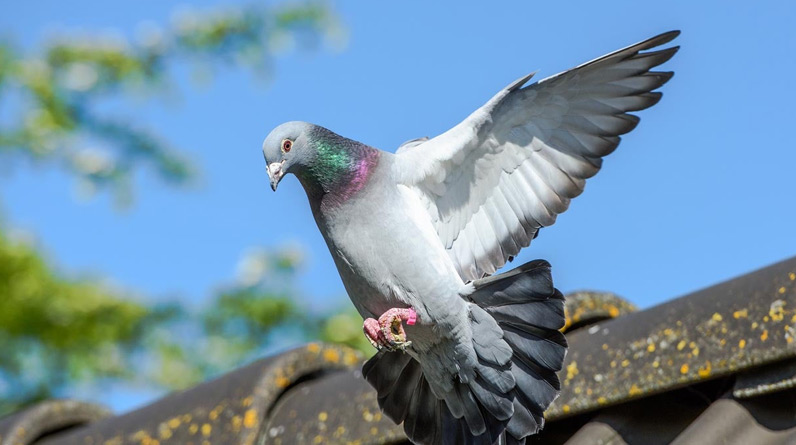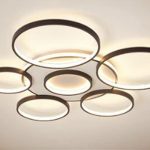Pigeons can be a charming sight when perched on a park bench, but when they infest your property, they can become a nuisance that poses serious health and property damage risks.
Their droppings, feathers, and debris can accumulate on rooftops, gutters, and ledges, causing unsightly stains, clogs, and corrosion that can weaken your building’s structure and compromise its functionality. Pigeons also carry diseases like histoplasmosis, salmonella, and E. coli that can spread to humans through their droppings and nesting materials.
Whether you own a commercial building or a residential property, it’s important to keep pigeons away from your premises to prevent property damage, health hazards, and legal liabilities. In this article, we’ll explore essential bird control techniques that you can use to keep pigeons away from your property and ensure the health and safety of your tenants, customers, and visitors.
1. Birth Control
One of the most common and long-term solutions, according to the OvoControl guide on how to get rid of pigeons, is using birth control methods. This involves using a pigeon birth control product that can be added to the bird’s food source.
This control method is harmless to pigeons and does not affect their behavior. It works by regulating the bird’s reproduction and prevents eggs from hatching, thereby reducing the pigeon population over time.
Pigeon birth control is an environmentally friendly and humane way to control pigeon populations, especially in areas where other control methods may not be feasible or effective.
However, it may take several months or even years to see a significant reduction in the pigeon population, and ongoing monitoring and application of the product may be necessary.
2. Habitat Modification
Modifying the habitat of your property is an effective way to deter pigeons from roosting and nesting on your premises. Pigeons prefer to perch on surfaces that offer them easy access to food, water, and shelter, so by removing or blocking their preferred perching and nesting spots, you can make your property less attractive to them.
Here are some habitat modification techniques that you can try:
- Install bird spikes or wires on ledges, rooflines, and other flat surfaces where pigeons perch. These spikes and wires make it difficult for pigeons to land and roost without causing them harm.
- Trim trees, bushes, and other vegetation around your property to reduce hiding places and nesting sites for pigeons.
- Keep your property clean and free of food and water sources that attract pigeons. Make sure to dispose of trash, spilled food, and standing water properly.
- Use decoys like fake owls, snakes, or cats to scare them away. These decoys should be moved around periodically to avoid habituation.
3. Visual and Audio Deterrents
Visual and audio deterrents can help keep pigeons away from your property by creating an intimidating or frightening environment. Here are some common visual and audio deterrents:
- Reflective surfaces, such as mirrors or CDs, can create a dazzling effect that disorients and scares pigeons away.
- Scare balloons or kites with menacing eyes or predator shapes can create a sense of danger and threat to pigeons.
- Sonic bird repellers emit high-frequency sounds that mimic bird distress calls, predator sounds, or other noises that pigeons find unpleasant or alarming.
- Motion-activated sprinklers or noise-makers can startle pigeons and deter them from landing or nesting on your property.
Visual and audio deterrents can be useful for keeping pigeons away from your property in the short term, but it’s important to note that they may become less effective over time due to habituation. To maintain their efficacy, these deterrents require regular relocation and maintenance. You may also need to combine them with other bird control techniques for optimal results.
4. Physical Barriers
Physical barriers are a long-term, more permanent solution to completely get rid of pigeons. Some common barriers for pigeon control include:
- Bird spikes: these are narrow strips of plastic or metal with protruding spikes that prevent pigeons from landing or perching on ledges, roofs, or other surfaces.
- Bird netting: this is a mesh-like material that creates a physical barrier to prevent pigeons from accessing areas such as balconies or rooftops.
- Sloped surfaces: sloping surfaces prevent pigeons from perching or nesting on roofs, ledges, or other areas by making it difficult to find a stable footing.
- Electric tracks or wires: these deliver a mild shock to pigeons that attempt to land on the surface, making it uncomfortable and unsafe for them to stay.
Conclusion
Preventing and controlling pigeon infestations requires a combination of tactics that can be tailored to your specific situation. From physical barriers and humane trapping to bird birth control and preventive measures, there are many options available to help keep these pests at bay.
It’s important to act quickly at the first sign of a pigeon problem, as these birds can cause significant damage to buildings, create health hazards, and be a nuisance to tenants or customers.
Remember to always consider the safety and well-being of the birds, and use humane methods whenever possible.



